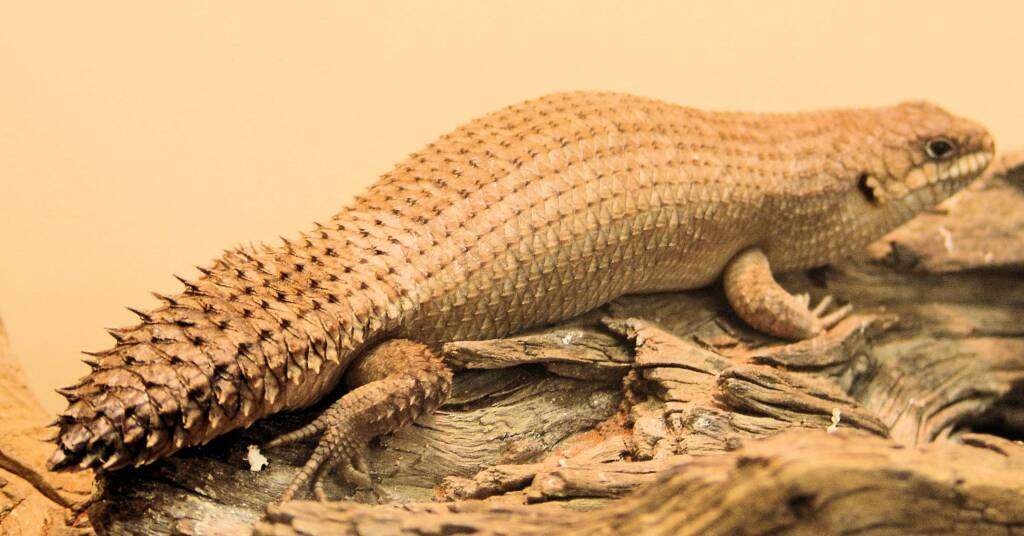
Description:
Scientific name: Egernia stokesii
Life span: 5 years in wild, 15-25 years in captivity
A social species of lizard belonging to the Scincidae family is called Egernia stokesii. This nocturnal species, which is native to Australia, is also known as the Stokes’s skink, the Stokes’s egernia, the Gidgee skink, and the spiny-tailed skink. With lighter ventral scales that range in color from white to yellow, Egernia stokesii have hues ranging from olive to reddish brown. The species frequently exhibits splotches of dorsal scales with lighter coloring. From the back of the neck to the tail, the dorsal scales are keeled, and its spiny tail scales distinguish the species. The length of the tail, which is around 35% of the length from the snout to the vent, is flattened rather than cylindrical and shorter than the animal’s head and body.
Native Region/Habitat
E. stokesii can be semi-arboreal and found in grassland, woodland, or shrubland settings, or it can be saxicolous and inhabit rocky outcrops. They are nocturnal and don’t burrow; instead, they find refuge in cracks in rocks, beneath logs, or within hollow trees. New South Wales, the Queensland, Northern Territory, South Australia, and Western Australia are home to E. stokesii.

Behavior:
Gidgee Skinks have a behavior that is highly unusual among lizards in that they dwell in colonies of up to 16 individuals. They are nocturnal, awake during the day, and frequently keep to themselves. They spend their time foraging and tanning close to their homes and in the safety of rocky nooks. Gidgee Skinks have been seen to build up little excrement mounds close to their basking locations. A skink seems to be able to distinguish between its own pile and that of another creature nearby. These faecal heaps may delineate territories. Also, they are able to tell kin from unrelated people.
Care As a pet/In captivity:
Enclosure: The minimum size of the enclosure for one gidgee should be 36″L x 18″W x 16″H. (40 gallons). But if you can give them a bigger enclosure, do it! Your pet will have more opportunity to exercise, explore, and exhibit natural behaviors if you provide them a bigger habitat.
Humidity: It’s simple to assume that gidgee skinks don’t require much humidity based on their natural environment. Yet, they actually thrive with daily water misting of the enclosure and average humidity levels of between 40 and 60%.
Temperature: Gidgee skinks enjoy the heat. They should have cold side temperatures of 80°F and a basking surface temperature of 110–120°F. The heat source should typically be turned off at night to achieve a temperature range of 70–80°F. Use a digital probe thermometer and set the probe on the suitable surface to take your temperatures.
Diet: Gidgee skinks are largely insectivorous, so they require a variety of insects to provide their bodies with the nutrition they require. When given the opportunity, they are known to consume fruits and vegetables as well.
Adults should only be fed every other day whereas children should receive both insects and greens every day. As many insects as will be consumed in a 5-minute period should be offered.
Table





